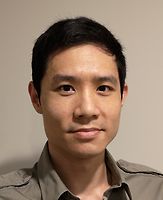Today
8:30 AM to 5:30 PM.
Description
For over sixty years Howick Village Optometrists has earned the trust of thousands of loyal customers. We feel that ocular health is as important as visual assessment, which is why we allow up to 45 minutes for our eye examination.
We employ New Zealand trained and registered optometrists, all of whom have their ocular therapeutic qualification as well.
Today we supply one of New Zealand's largest ranges of eyewear, including the latest designer spectacles, sunglasses, contact lenses and accessories. The secret of our success is we take the time to really listen to our customers so they receive the right eyewear.
If your arms aren't long enough anymore or your vision is a bit fuzzy, call in and see us for all your optical requirements. We'll find the solution that's right for you.
Follow us on Facebook.
Optometrists
-

Ms Ilana Scholten
Registered Optometrist
-

Mrs Kerensa McCamish
Registered Optometrist
-

Mrs Beverley Payne
Registered Optometrist
-

Jonathan Shen
Registered Optometrist
-

Mrs Niti Todd
Registered Optometrist
Dispensing Opticians
-

Mrs Tania Forde
Dispensing Optician
-

Mrs Anette Lagert-Cox
Dispensing Optician
-

Miss Elise Paulin
Dispensing Optician
Hours
8:30 AM to 5:30 PM.
| Mon – Wed | 8:30 AM – 5:30 PM |
|---|---|
| Thu | 8:30 AM – 7:00 PM |
| Fri | 8:30 AM – 5:00 PM |
| Sat | 9:00 AM – 1:00 PM |
Public Holidays: Closed Auckland Anniversary (26 Jan), Waitangi Day (6 Feb), Good Friday (3 Apr), Easter Sunday (5 Apr), Easter Monday (6 Apr), ANZAC Day (observed) (27 Apr), King's Birthday (1 Jun), Matariki (10 Jul), Labour Day (26 Oct).
Christmas: Open 22 Dec — 24 Dec. Closed 25 Dec — 26 Dec. Open 27 Dec. Closed 28 Dec. Open 29 Dec — 31 Dec. Closed 1 Jan — 2 Jan. Open 3 Jan. Closed 4 Jan. Open 5 Jan — 9 Jan.
Languages Spoken
English
Services Provided
During an eye test you are assessed for different things. A Snellen chart, which contains rows of letters starting with one huge letter then groups of letters getting progressively smaller, is used for visual acuity. An optometrist will establish how well you see without spectacles or contact lenses by getting you to read letters until they are too small or blurred to be recognised. They test each eye on its own and both together. Then the test is repeated while wearing your existing eye wear, this is known as your best corrected vision. Then the optometrist will ask you to remove your eye wear again and will see if your ability to read letters can be improved using lenses of different strengths for each eye until your eye sight is as good as it can be. If these new lenses are a different strength from your current spectacles you are given a new prescription and new lenses will be made for you. People usually wear spectacles to correct a refraction error. In these cases the person’s eye lens is incorrectly focused, making that person either long or short sighted. This fault is corrected by placing an external lens, spectacle lens or contact lens, in front of the eye so that what is seen reaches the correct area on the retina in the back of the eye. There are other tests to look for other conditions, so an optometrist can find a corrective lens that gets a person’s sight near to, or in excess of, 20/20 vision. We use central vision to read and look at thing in front of us. We also need side or peripheral vision to see things that are above and below and to the sides. This is also assessed during an eye test as you need a good field of vision to drive a car and it is a requirement for certain professions like the police.
During an eye test you are assessed for different things. A Snellen chart, which contains rows of letters starting with one huge letter then groups of letters getting progressively smaller, is used for visual acuity. An optometrist will establish how well you see without spectacles or contact lenses by getting you to read letters until they are too small or blurred to be recognised. They test each eye on its own and both together. Then the test is repeated while wearing your existing eye wear, this is known as your best corrected vision. Then the optometrist will ask you to remove your eye wear again and will see if your ability to read letters can be improved using lenses of different strengths for each eye until your eye sight is as good as it can be. If these new lenses are a different strength from your current spectacles you are given a new prescription and new lenses will be made for you. People usually wear spectacles to correct a refraction error. In these cases the person’s eye lens is incorrectly focused, making that person either long or short sighted. This fault is corrected by placing an external lens, spectacle lens or contact lens, in front of the eye so that what is seen reaches the correct area on the retina in the back of the eye. There are other tests to look for other conditions, so an optometrist can find a corrective lens that gets a person’s sight near to, or in excess of, 20/20 vision. We use central vision to read and look at thing in front of us. We also need side or peripheral vision to see things that are above and below and to the sides. This is also assessed during an eye test as you need a good field of vision to drive a car and it is a requirement for certain professions like the police.
During an eye test you are assessed for different things. A Snellen chart, which contains rows of letters starting with one huge letter then groups of letters getting progressively smaller, is used for visual acuity. An optometrist will establish how well you see without spectacles or contact lenses by getting you to read letters until they are too small or blurred to be recognised. They test each eye on its own and both together. Then the test is repeated while wearing your existing eye wear, this is known as your best corrected vision. Then the optometrist will ask you to remove your eye wear again and will see if your ability to read letters can be improved using lenses of different strengths for each eye until your eye sight is as good as it can be. If these new lenses are a different strength from your current spectacles you are given a new prescription and new lenses will be made for you.
People usually wear spectacles to correct a refraction error. In these cases the person’s eye lens is incorrectly focused, making that person either long or short sighted. This fault is corrected by placing an external lens, spectacle lens or contact lens, in front of the eye so that what is seen reaches the correct area on the retina in the back of the eye. There are other tests to look for other conditions, so an optometrist can find a corrective lens that gets a person’s sight near to, or in excess of, 20/20 vision.
We use central vision to read and look at thing in front of us. We also need side or peripheral vision to see things that are above and below and to the sides. This is also assessed during an eye test as you need a good field of vision to drive a car and it is a requirement for certain professions like the police.
During an eye test optometrists routinely take a photograph of the back of each of your eyes. These images are transferred to a computer and are filed in your electronic notes. The photos do not show the optometrist anything they will not have seen when inspecting your eye but provide a record that can be referred to at a later date. This is an effective way of monitoring any changes.
During an eye test optometrists routinely take a photograph of the back of each of your eyes. These images are transferred to a computer and are filed in your electronic notes. The photos do not show the optometrist anything they will not have seen when inspecting your eye but provide a record that can be referred to at a later date. This is an effective way of monitoring any changes.
During an eye test optometrists routinely take a photograph of the back of each of your eyes. These images are transferred to a computer and are filed in your electronic notes. The photos do not show the optometrist anything they will not have seen when inspecting your eye but provide a record that can be referred to at a later date. This is an effective way of monitoring any changes.
Optometrists are able to detect early signs of glaucoma even before you are aware of any symptoms. They are specifically looking for changes when doing the health check part of an eye test. Since the optic nerve can be affected by this condition, they will inspect the nerve head in each eye to see if the disc shape has changed and if there are any variations in colour. If picked up early, damage from this condition can be prevented from becoming serious and sight threatening.
Optometrists are able to detect early signs of glaucoma even before you are aware of any symptoms. They are specifically looking for changes when doing the health check part of an eye test. Since the optic nerve can be affected by this condition, they will inspect the nerve head in each eye to see if the disc shape has changed and if there are any variations in colour. If picked up early, damage from this condition can be prevented from becoming serious and sight threatening.
Optometrists are able to detect early signs of glaucoma even before you are aware of any symptoms. They are specifically looking for changes when doing the health check part of an eye test. Since the optic nerve can be affected by this condition, they will inspect the nerve head in each eye to see if the disc shape has changed and if there are any variations in colour. If picked up early, damage from this condition can be prevented from becoming serious and sight threatening.
A visual field establishes how good your peripheral vision (PV) is. This is what you see above and below and to the side when you are looking straight ahead. Generally your PV will not be as good as what is known as your central vision but it is important for driving and a good visual field is required to become a New Zealand police officer. There are many conditions that can affect your PV including high blood pressure, glaucoma, strokes, an overactive thyroid, and diabetes. In glaucoma, nerve cells in the retina are damaged and die so messages are unable to be transmitted to the brain. Remarkably up to 40% of these cells can be lost before a person becomes aware of reduced vision.
A visual field establishes how good your peripheral vision (PV) is. This is what you see above and below and to the side when you are looking straight ahead. Generally your PV will not be as good as what is known as your central vision but it is important for driving and a good visual field is required to become a New Zealand police officer. There are many conditions that can affect your PV including high blood pressure, glaucoma, strokes, an overactive thyroid, and diabetes. In glaucoma, nerve cells in the retina are damaged and die so messages are unable to be transmitted to the brain. Remarkably up to 40% of these cells can be lost before a person becomes aware of reduced vision.
A visual field establishes how good your peripheral vision (PV) is. This is what you see above and below and to the side when you are looking straight ahead. Generally your PV will not be as good as what is known as your central vision but it is important for driving and a good visual field is required to become a New Zealand police officer. There are many conditions that can affect your PV including high blood pressure, glaucoma, strokes, an overactive thyroid, and diabetes. In glaucoma, nerve cells in the retina are damaged and die so messages are unable to be transmitted to the brain. Remarkably up to 40% of these cells can be lost before a person becomes aware of reduced vision.
Diabetic retinopathy (DR) can be detected by systematic retinal screening. Diabetes retinal screening is funded by the DHB and some optometrists are contracted to provide the service in the community. Currently this community service is only available in the Greater Wellington Regional Area, Lakes District Health Board (DHB), Tairawhiti DHB, and Counties Manukau DHB. The aim of the service is to ensure each individual diagnosed with diabetes has received a retinal screen during the preceding 24 months and that their data is transferred to the primary care provider they are enrolled with, and DHB. Entry to this free service is by referral from your general practitioner (GP), who will know which optometrists are able to provide systematic retinal screening. If diabetic eye disease is detected by your regular optometrist, they will refer you to your GP for diabetes management. This will include regular systematic retinal screening. The majority of patients who have had diabetes for more than a decade will show signs of damage. Early detection helps as patients can be advised on changes to their diet and lifestyle to control blood sugar levels and minimise damage caused to this vital organ.
Diabetic retinopathy (DR) can be detected by systematic retinal screening. Diabetes retinal screening is funded by the DHB and some optometrists are contracted to provide the service in the community. Currently this community service is only available in the Greater Wellington Regional Area, Lakes District Health Board (DHB), Tairawhiti DHB, and Counties Manukau DHB. The aim of the service is to ensure each individual diagnosed with diabetes has received a retinal screen during the preceding 24 months and that their data is transferred to the primary care provider they are enrolled with, and DHB. Entry to this free service is by referral from your general practitioner (GP), who will know which optometrists are able to provide systematic retinal screening. If diabetic eye disease is detected by your regular optometrist, they will refer you to your GP for diabetes management. This will include regular systematic retinal screening. The majority of patients who have had diabetes for more than a decade will show signs of damage. Early detection helps as patients can be advised on changes to their diet and lifestyle to control blood sugar levels and minimise damage caused to this vital organ.
Diabetic retinopathy (DR) can be detected by systematic retinal screening. Diabetes retinal screening is funded by the DHB and some optometrists are contracted to provide the service in the community. Currently this community service is only available in the Greater Wellington Regional Area, Lakes District Health Board (DHB), Tairāwhiti DHB, and Counties Manukau DHB. The aim of the service is to ensure each individual diagnosed with diabetes has received a retinal screen during the preceding 24 months and that their data is transferred to the primary care provider they are enrolled with, and DHB. Entry to this free service is by referral from your general practitioner (GP), who will know which optometrists are able to provide systematic retinal screening.
If diabetic eye disease is detected by your regular optometrist, they will refer you to your GP for diabetes management. This will include regular systematic retinal screening. The majority of patients who have had diabetes for more than a decade will show signs of damage. Early detection helps as patients can be advised on changes to their diet and lifestyle to control blood sugar levels and minimise damage caused to this vital organ.
Colour vision is tested using Ishihara plates, named after Shinobu Ishihara a Japanese ophthalmologist who created a simple test to detect colour blindness in 1918. His test remains the gold standard worldwide. Ishihara plates consist of numbers shaped out of dots of one colour superimposed on a circle of dots of another colour. In some cases the numbers disappear and appear or change. The full test has 38 plates, but most colour blindness can be detected by just four plates.
Colour vision is tested using Ishihara plates, named after Shinobu Ishihara a Japanese ophthalmologist who created a simple test to detect colour blindness in 1918. His test remains the gold standard worldwide. Ishihara plates consist of numbers shaped out of dots of one colour superimposed on a circle of dots of another colour. In some cases the numbers disappear and appear or change. The full test has 38 plates, but most colour blindness can be detected by just four plates.
Colour vision is tested using Ishihara plates, named after Shinobu Ishihara a Japanese ophthalmologist who created a simple test to detect colour blindness in 1918. His test remains the gold standard worldwide.
Ishihara plates consist of numbers shaped out of dots of one colour superimposed on a circle of dots of another colour. In some cases the numbers disappear and appear or change. The full test has 38 plates, but most colour blindness can be detected by just four plates.
Eye injuries can range from relatively minor, for instance getting dish washing liquid in your eye, to penetrating injuries with a sharp object like scissors leading to blindness. Optometrists deal with superficial eye injuries. These are eye injuries that take 24-72 hours to heal. Eye injuries can be treated with eye drops to prevent infection and oral analgesia (painkillers) to treat pain. Optometrists will refer people with more serious eye injuries to ophthalmologists.
Eye injuries can range from relatively minor, for instance getting dish washing liquid in your eye, to penetrating injuries with a sharp object like scissors leading to blindness. Optometrists deal with superficial eye injuries. These are eye injuries that take 24-72 hours to heal. Eye injuries can be treated with eye drops to prevent infection and oral analgesia (painkillers) to treat pain. Optometrists will refer people with more serious eye injuries to ophthalmologists.
Eye injuries can range from relatively minor, for instance getting dish washing liquid in your eye, to penetrating injuries with a sharp object like scissors leading to blindness. Optometrists deal with superficial eye injuries. These are eye injuries that take 24-72 hours to heal. Eye injuries can be treated with eye drops to prevent infection and oral analgesia (painkillers) to treat pain. Optometrists will refer people with more serious eye injuries to ophthalmologists.
It is vital children have their eyes tested early to screen for abnormalities. If there are problems like strabismus, where eyes are misaligned, or amblyopia, commonly called a lazy eye, the earlier treatment starts the better the outcome. Poor eyesight will also reduce a child’s ability to learn at home as well as at school. As well as testing for these conditions optometrists test for near and far vision; if needed, corrective glasses will make a great difference to a child’s ability to see and interact with the world. Children are also tested for colour blindness.
It is vital children have their eyes tested early to screen for abnormalities. If there are problems like strabismus, where eyes are misaligned, or amblyopia, commonly called a lazy eye, the earlier treatment starts the better the outcome. Poor eyesight will also reduce a child’s ability to learn at home as well as at school. As well as testing for these conditions optometrists test for near and far vision; if needed, corrective glasses will make a great difference to a child’s ability to see and interact with the world. Children are also tested for colour blindness.
It is vital children have their eyes tested early to screen for abnormalities. If there are problems like strabismus, where eyes are misaligned, or amblyopia, commonly called a lazy eye, the earlier treatment starts the better the outcome. Poor eyesight will also reduce a child’s ability to learn at home as well as at school. As well as testing for these conditions optometrists test for near and far vision; if needed, corrective glasses will make a great difference to a child’s ability to see and interact with the world. Children are also tested for colour blindness.
Anyone wishing to join the New Zealand Police needs to pass a special eye test conducted by a registered practitioner. Potential police officers are tested for unaided sight and they are also required to have good peripheral and night vision. Their eyes must look normal. Anyone with a squint is rejected. There is also specialist testing for civil aviation and test pilots. There are maritime visual exams for people in the fishing industry.
Anyone wishing to join the New Zealand Police needs to pass a special eye test conducted by a registered practitioner. Potential police officers are tested for unaided sight and they are also required to have good peripheral and night vision. Their eyes must look normal. Anyone with a squint is rejected. There is also specialist testing for civil aviation and test pilots. There are maritime visual exams for people in the fishing industry.
Anyone wishing to join the New Zealand Police needs to pass a special eye test conducted by a registered practitioner. Potential police officers are tested for unaided sight and they are also required to have good peripheral and night vision. Their eyes must look normal. Anyone with a squint is rejected. There is also specialist testing for civil aviation and test pilots. There are maritime visual exams for people in the fishing industry.
This includes testing for visual field as you need to meet a certain standard to be able to drive safely. There is a screening tool and a full test. The full test is given to borderline cases to ensure that drivers meet the required standards.
This includes testing for visual field as you need to meet a certain standard to be able to drive safely. There is a screening tool and a full test. The full test is given to borderline cases to ensure that drivers meet the required standards.
This includes testing for visual field as you need to meet a certain standard to be able to drive safely. There is a screening tool and a full test. The full test is given to borderline cases to ensure that drivers meet the required standards.
Frames: there is a baffling range of spectacle frames available in most optical outlets. They are made in many shapes, sizes, colours and materials. They are also made for different uses, reflecting the lifestyle and work of individual wearers. Dispensing opticians and optometrists are able to help you find a frame that complements the shape of your face, colouring and suits your needs. They will also take a set of measurements to ensure that the frame built for you fits correctly and that you get maximum use from the lenses. Lenses: at the end of an eye test, if your vision can be improved by wearing glasses, the optometrist will write a prescription for a set of lenses. In some cases you will have a different prescription for each eye. Lenses are designed to bring your eyesight up to 20/20 vision and middle aged and older patients may be advised to have varifocals so that they do not require a second pair of glasses for reading or close work. Lens technology is improving all the time with new lightweight material becoming available that can self adjust to reduce light. Contact lenses: contact lenses have been around for more than half a century. The material has changed over this period: hard or soft lenses being replaced by gas permeable and now disposable contact lenses. These lenses are able to compensate for long or short sight and are worn for a day then thrown away to minimise the risk of infecting the eye. Because a foreign object is placed on the eye, contact lens users are advised to have an annual eye check so that an optometrist can check the cornea to ensure there are no abrasions or other long term complications. While most wearers use contact lenses to improve their eyesight there are products that can change the colour of your eyes or make them a darker or lighter shade of the same colour. Sunglasses: your dispensing optician and optometrist will be able to advise you on the most suitable sunglasses to lessen damage caused by ultraviolet light. Choosing: dispensing opticians and optometrists are trained to help you select spectacle frames and lenses that suit your look, lifestyle and pocket. They will ask about your work, interests and preferences and then find you a selection of models to consider. They are aware of a set of principles that help them find frames they think will suit the shape of your face and colouring. The final choice is yours. Care of glasses/lenses: as part of the service offered by dispensing opticians and optometrists, patients are given advice and tips about how to look after their spectacles. Things that will extend the working lives of eyewear like using both hands to take off or put them on, correct storage, best methods of cleaning and so forth. In the past they will also have advised contact lens wearers on the best way to sterilise these objects but most wearers today use disposable contact lenses so this is no longer necessary. Adjusting: wear and tear during everyday use means that arm hinges become loose and the frame is bent out of shape. Your dispensing optician or optometrist will usually readjust the glasses he has sold you free of charge. Warranty: generally your spectacle frames will have a manufacturer’s one or two year warranty which will cover things like faulty soldering or arm hinges. It does not cover damage done if your specs are chewed by a dog or they are run over by a car. Lenses also have a one or two year warranty. Repair: dispensing opticians and optometrists not only help you find the most suitable pair of glasses but are also able to repair them. Most commonly, arms get loose when they are pushed to the top of the head and need tightening up, nose pads break off and spectacles become bent when they are sat on. Many of these repairs can be done in the workshop most dispensing opticians have behind the shop or, when parts are broken, new components can be ordered in to replace the damaged part.
Frames: there is a baffling range of spectacle frames available in most optical outlets. They are made in many shapes, sizes, colours and materials. They are also made for different uses, reflecting the lifestyle and work of individual wearers. Dispensing opticians and optometrists are able to help you find a frame that complements the shape of your face, colouring and suits your needs. They will also take a set of measurements to ensure that the frame built for you fits correctly and that you get maximum use from the lenses. Lenses: at the end of an eye test, if your vision can be improved by wearing glasses, the optometrist will write a prescription for a set of lenses. In some cases you will have a different prescription for each eye. Lenses are designed to bring your eyesight up to 20/20 vision and middle aged and older patients may be advised to have varifocals so that they do not require a second pair of glasses for reading or close work. Lens technology is improving all the time with new lightweight material becoming available that can self adjust to reduce light. Contact lenses: contact lenses have been around for more than half a century. The material has changed over this period: hard or soft lenses being replaced by gas permeable and now disposable contact lenses. These lenses are able to compensate for long or short sight and are worn for a day then thrown away to minimise the risk of infecting the eye. Because a foreign object is placed on the eye, contact lens users are advised to have an annual eye check so that an optometrist can check the cornea to ensure there are no abrasions or other long term complications. While most wearers use contact lenses to improve their eyesight there are products that can change the colour of your eyes or make them a darker or lighter shade of the same colour. Sunglasses: your dispensing optician and optometrist will be able to advise you on the most suitable sunglasses to lessen damage caused by ultraviolet light. Choosing: dispensing opticians and optometrists are trained to help you select spectacle frames and lenses that suit your look, lifestyle and pocket. They will ask about your work, interests and preferences and then find you a selection of models to consider. They are aware of a set of principles that help them find frames they think will suit the shape of your face and colouring. The final choice is yours. Care of glasses/lenses: as part of the service offered by dispensing opticians and optometrists, patients are given advice and tips about how to look after their spectacles. Things that will extend the working lives of eyewear like using both hands to take off or put them on, correct storage, best methods of cleaning and so forth. In the past they will also have advised contact lens wearers on the best way to sterilise these objects but most wearers today use disposable contact lenses so this is no longer necessary. Adjusting: wear and tear during everyday use means that arm hinges become loose and the frame is bent out of shape. Your dispensing optician or optometrist will usually readjust the glasses he has sold you free of charge. Warranty: generally your spectacle frames will have a manufacturer’s one or two year warranty which will cover things like faulty soldering or arm hinges. It does not cover damage done if your specs are chewed by a dog or they are run over by a car. Lenses also have a one or two year warranty. Repair: dispensing opticians and optometrists not only help you find the most suitable pair of glasses but are also able to repair them. Most commonly, arms get loose when they are pushed to the top of the head and need tightening up, nose pads break off and spectacles become bent when they are sat on. Many of these repairs can be done in the workshop most dispensing opticians have behind the shop or, when parts are broken, new components can be ordered in to replace the damaged part.
Frames: there is a baffling range of spectacle frames available in most optical outlets. They are made in many shapes, sizes, colours and materials. They are also made for different uses, reflecting the lifestyle and work of individual wearers. Dispensing opticians and optometrists are able to help you find a frame that complements the shape of your face, colouring and suits your needs. They will also take a set of measurements to ensure that the frame built for you fits correctly and that you get maximum use from the lenses.
Lenses: at the end of an eye test, if your vision can be improved by wearing glasses, the optometrist will write a prescription for a set of lenses. In some cases you will have a different prescription for each eye. Lenses are designed to bring your eyesight up to 20/20 vision and middle aged and older patients may be advised to have varifocals so that they do not require a second pair of glasses for reading or close work. Lens technology is improving all the time with new lightweight material becoming available that can self adjust to reduce light.
Contact lenses: contact lenses have been around for more than half a century. The material has changed over this period: hard or soft lenses being replaced by gas permeable and now disposable contact lenses. These lenses are able to compensate for long or short sight and are worn for a day then thrown away to minimise the risk of infecting the eye. Because a foreign object is placed on the eye, contact lens users are advised to have an annual eye check so that an optometrist can check the cornea to ensure there are no abrasions or other long term complications. While most wearers use contact lenses to improve their eyesight there are products that can change the colour of your eyes or make them a darker or lighter shade of the same colour.
Sunglasses: your dispensing optician and optometrist will be able to advise you on the most suitable sunglasses to lessen damage caused by ultraviolet light.
Choosing: dispensing opticians and optometrists are trained to help you select spectacle frames and lenses that suit your look, lifestyle and pocket. They will ask about your work, interests and preferences and then find you a selection of models to consider. They are aware of a set of principles that help them find frames they think will suit the shape of your face and colouring. The final choice is yours.
Care of glasses/lenses: as part of the service offered by dispensing opticians and optometrists, patients are given advice and tips about how to look after their spectacles. Things that will extend the working lives of eyewear like using both hands to take off or put them on, correct storage, best methods of cleaning and so forth. In the past they will also have advised contact lens wearers on the best way to sterilise these objects but most wearers today use disposable contact lenses so this is no longer necessary.
Adjusting: wear and tear during everyday use means that arm hinges become loose and the frame is bent out of shape. Your dispensing optician or optometrist will usually readjust the glasses he has sold you free of charge.
Warranty: generally your spectacle frames will have a manufacturer’s one or two year warranty which will cover things like faulty soldering or arm hinges. It does not cover damage done if your specs are chewed by a dog or they are run over by a car. Lenses also have a one or two year warranty.
Repair: dispensing opticians and optometrists not only help you find the most suitable pair of glasses but are also able to repair them. Most commonly, arms get loose when they are pushed to the top of the head and need tightening up, nose pads break off and spectacles become bent when they are sat on. Many of these repairs can be done in the workshop most dispensing opticians have behind the shop or, when parts are broken, new components can be ordered in to replace the damaged part.
During an eye test optometrists routinely examine the internal and external structures of your eye. The optometrist will look into your eye by shining a light source through your pupil to illuminate the retina. This may take some time as the optometrist will want to ensure the fundus is viewed as completely as possible and all signs and symptoms of eye disease are noted. It is important that the causes of poor vision are determined before any treatment, including spectacles, is prescribed.
During an eye test optometrists routinely examine the internal and external structures of your eye. The optometrist will look into your eye by shining a light source through your pupil to illuminate the retina. This may take some time as the optometrist will want to ensure the fundus is viewed as completely as possible and all signs and symptoms of eye disease are noted. It is important that the causes of poor vision are determined before any treatment, including spectacles, is prescribed.
During an eye test optometrists routinely examine the internal and external structures of your eye. The optometrist will look into your eye by shining a light source through your pupil to illuminate the retina. This may take some time as the optometrist will want to ensure the fundus is viewed as completely as possible and all signs and symptoms of eye disease are noted. It is important that the causes of poor vision are determined before any treatment, including spectacles, is prescribed.
Optical coherence tomography (OCT) is an optical signal acquisition and processing method which is used to obtain detailed images from within the retina. For more information on this leading edge technology which Howick Village Optometrists has invested in, please click here
Optical coherence tomography (OCT) is an optical signal acquisition and processing method which is used to obtain detailed images from within the retina. For more information on this leading edge technology which Howick Village Optometrists has invested in, please click here
Optical coherence tomography (OCT) is an optical signal acquisition and processing method which is used to obtain detailed images from within the retina. For more information on this leading edge technology which Howick Village Optometrists has invested in, please click here
Website
Contact Details
94 Picton Street, Howick
East Auckland
8:30 AM to 5:30 PM.
-
Phone
(09) 534 8716
-
Mobile
022 175 6490
Email
Website
94 Picton Street
Howick
Auckland
Street Address
94 Picton Street
Howick
Auckland
Postal Address
PO Box 38 163
Howick
Auckland 2145
Was this page helpful?
This page was last updated at 11:35AM on March 24, 2025. This information is reviewed and edited by Howick Village Optometrists.

